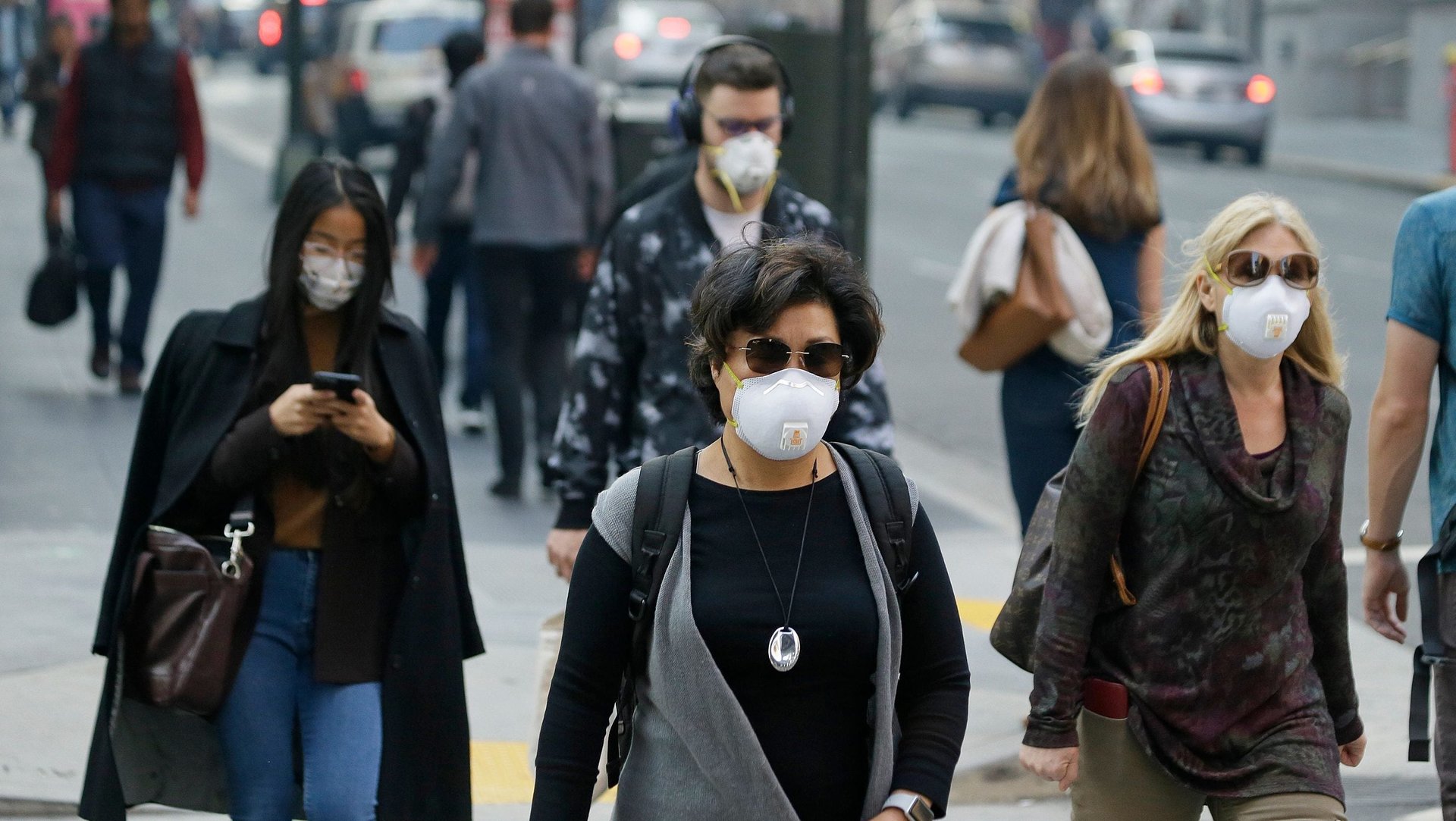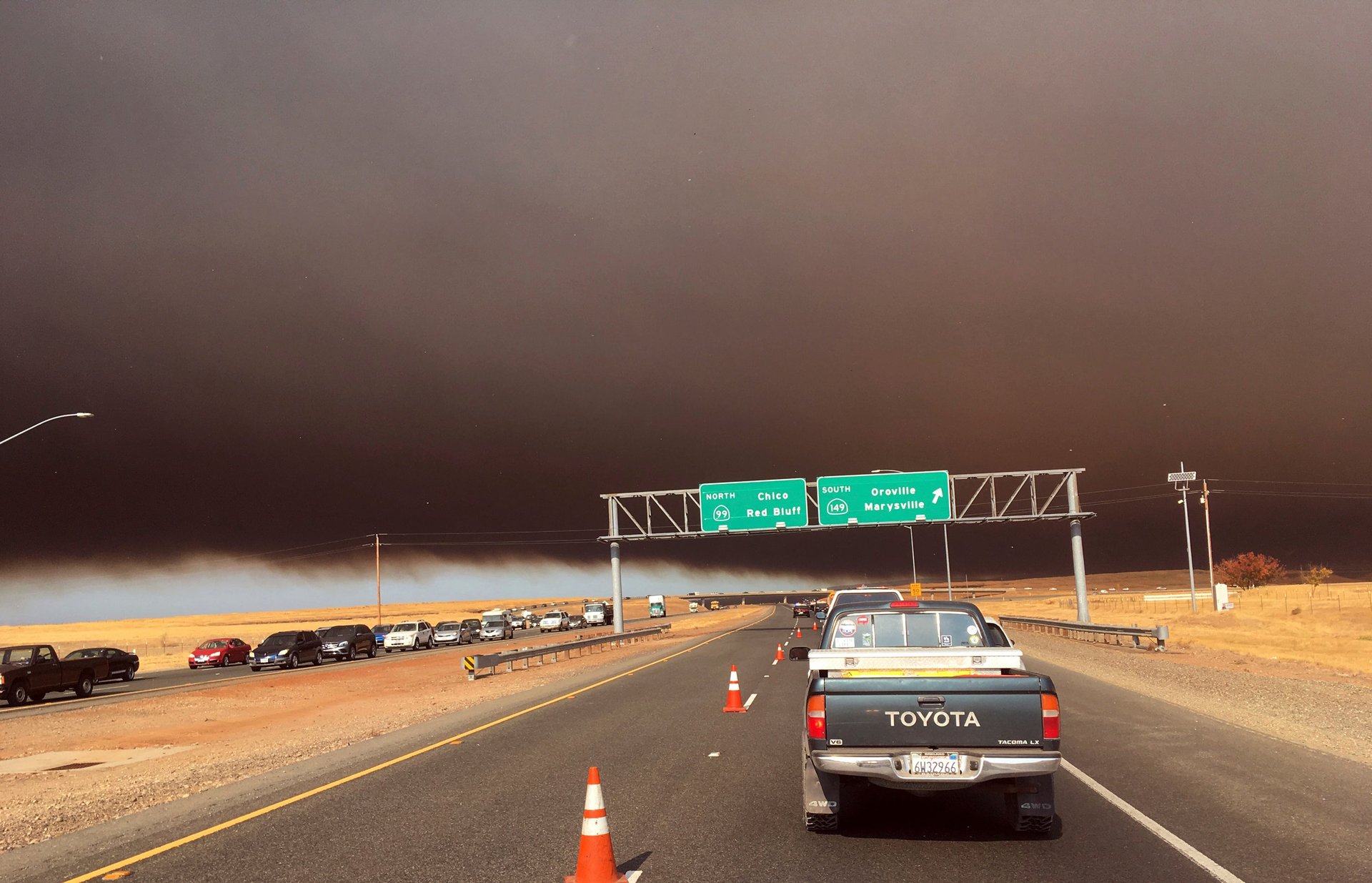In parts of California, breathing is like smoking half a pack of cigarettes a day
The Camp wildfire in Northern California has burned 70,000 acres and killed five people as of Friday morning (Nov. 9). It is also producing massive amounts of dangerous smoke. In some parts of the state, breathing the air today is the equivalent of smoking multiple cigarettes—as many as 13.


The Camp wildfire in Northern California has burned 70,000 acres and killed five people as of Friday morning (Nov. 9). It is also producing massive amounts of dangerous smoke. In some parts of the state, breathing the air today is the equivalent of smoking multiple cigarettes—as many as 13.
The Camp Fire smoke plume is affecting air quality throughout northern California’s Butte County, and has spread throughout the region. Smoke is currently blanketing Sacramento, about 80 miles (130 km) south of Paradise, the epicenter of the Camp Fire, and has made its way down to the Bay Area, about 150 miles away. The Air Quality Index (AQI) is reaching levels considered “unhealthy,” “very unhealthy,” and even “hazardous,” the highest level of concern, in places. Dozens of schools are closed due to smoke in the air.
AQI levels correspond to specific concentrations of PM2.5, the tiny particulate matter pollution produced during any combustion, including burning of wood and other organic matter found in forests. PM2.5 is small enough to slip deep into lungs, aggravating asthma and contributing to a range of health effects.

In turn, PM2.5 concentrations can be translated to cigarette equivalencies. According to analysis co-authored by Richard Muller, a physics professor at the University of California-Berkeley, if you were, on average, exposed to 22 micrograms per cubic meter of PM2.5, it’d be the equivalent to smoking one cigarette a day. So if you divide the concentration of PM2.5 by 22, you get the rough cigarette equivalence of simply breathing your region’s air.
As of writing, the AQI in Ukiah, California, a small city roughly 90 miles southwest of where the fire broke out in Butte County, has an AQI reading of 350. That translates to a PM2.5 concentration of 299.9 micrograms per cubic meters. Divided by 22, that’s 13.6. So just breathing the air for one day today in Ukiah, California, is the equivalent of smoking about 13 and a half cigarettes.
In San Francisco, the AQI is 178 today. That’s a PM2.5 concentration of 177.7 micrograms per cubic meters. So breathing air in San Francisco today is the equivalent of smoking eight cigarettes. Right now, breathing in Oakland is the equivalent of smoking seven cigarettes. In Sacramento, the air quality is the equivalent of smoking about three cigarettes.
PM2.5 air pollution aggravates asthma and other upper respiratory conditions, but it hits babies and the elderly hardest. Exposure in the womb has long been associated with an array of adverse birth outcomes like preterm birth and low birth weight.
Other cities experience sky-high AQIs regularly—which can translate to absurd numbers of cigarettes. One day last year, breathing the air in New Delhi, India, was the equivalent of smoking 45 cigarettes a day.